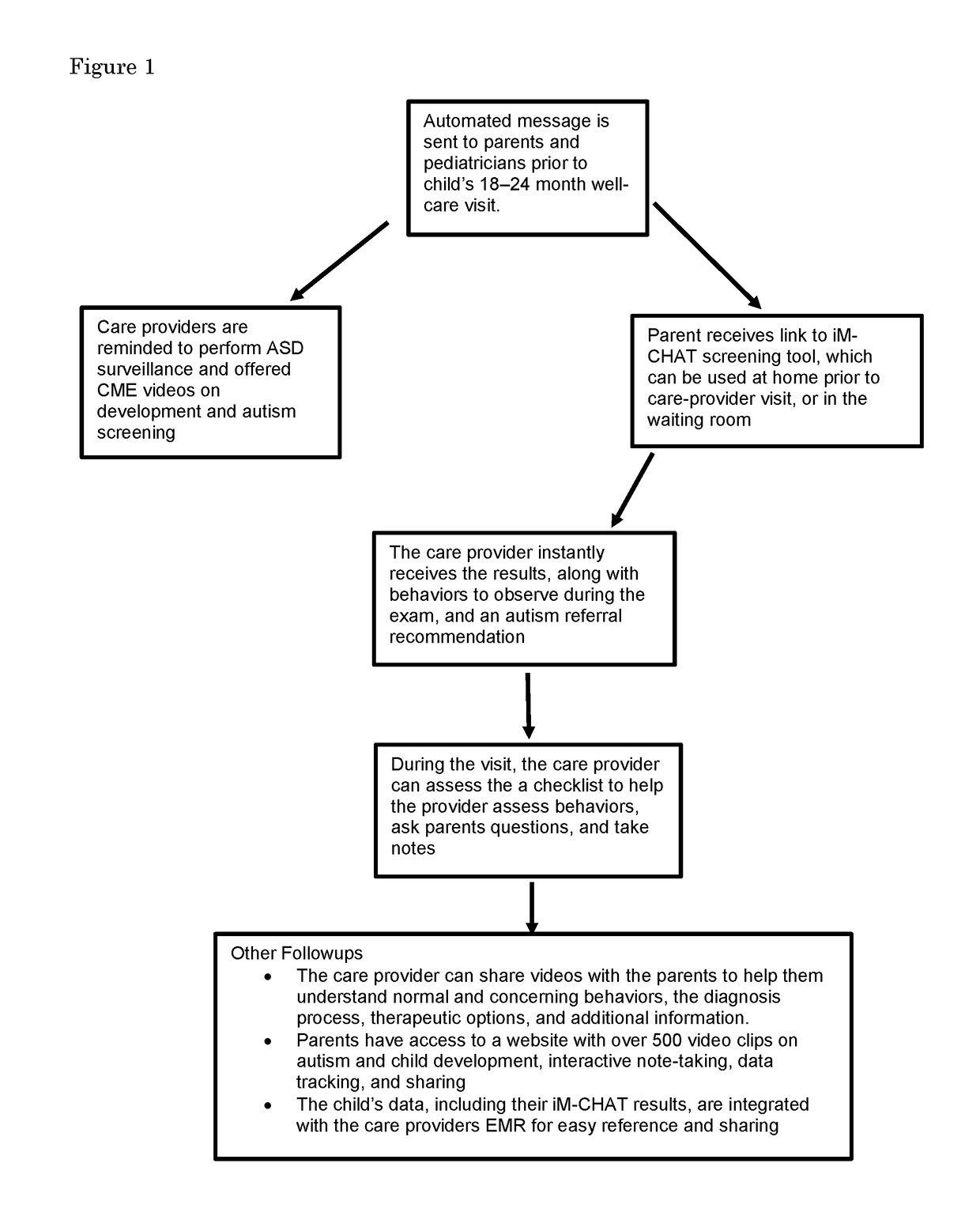Video databases and methods for detection or diagnosis of neurodevelopment disorders
a neurodevelopmental disorder and database technology, applied in diagnostic recording/measuring, instruments, applications, etc., can solve problems such as social deficits, cognitive delays, and difficult if not impossible capture of characteristic signs and behaviors in written clinical notes
- Summary
- Abstract
- Description
- Claims
- Application Information
AI Technical Summary
Benefits of technology
Problems solved by technology
Method used
Image
Examples
example 1
abase
[0075]A library was created of 549 video segments and educational documentaries that show the subtle behavioral signs of ASD, the diagnostic process, and the value of early therapy, along with a suite of video-enhanced interactive tools for doctors to support surveillance and screening during well visits. The core component of the program, the iM-CHAT, is an audio-video enhanced, interactive, automatically scored version of the Modified Checklist for Autism in Toddlers (M-CHAT-R). The iM-CHAT features video examples of the behaviors and audio of the questions and is scored automatically. It also integrates the Follow-Up Interview to appear immediately afterwards if the answers are inconclusive.
[0076]These features and tools may be adapted and modified to be available at the right time and place during the pediatric care workflow, making it easy for practitioners to follow the protocols recommended by the American Academy of Pediatrics (AAP) for the detection of ASD in children ...
example 2
Validation
[0077]A clinical trial will be conducted to demonstrate that the iM-CHAT, with audio and video enhancements, performs as well or better, psychometrically, than the most recent version of the paper M-CHAT-R.
[0078]About 3,000 children will be enrolled in in a multi-center trial. The children will be assigned to an iM-CHAT screening (according to the instant invention), or to a conventional M-CHAT-R screening. The screening scores will be independently evaluated by at least one expert in the field and additional follow-up evaluations may be performed. The iM-CHAT will be compared to the M-CHAT-R to assess the extent of false positives, false negatives and other relevant factors.
PUM
 Login to View More
Login to View More Abstract
Description
Claims
Application Information
 Login to View More
Login to View More - R&D
- Intellectual Property
- Life Sciences
- Materials
- Tech Scout
- Unparalleled Data Quality
- Higher Quality Content
- 60% Fewer Hallucinations
Browse by: Latest US Patents, China's latest patents, Technical Efficacy Thesaurus, Application Domain, Technology Topic, Popular Technical Reports.
© 2025 PatSnap. All rights reserved.Legal|Privacy policy|Modern Slavery Act Transparency Statement|Sitemap|About US| Contact US: help@patsnap.com


